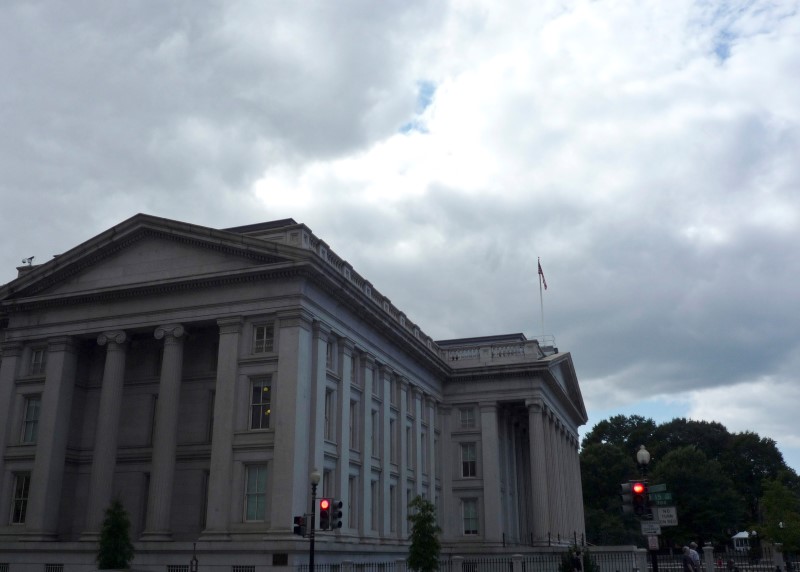(Bloomberg) -- The U.S. Treasury said it expects to raise $947 billion in debt over the three months through September to fund the massive and continuing spending surge to address the coronavirus crisis.
The figure, released in Washington Monday, is $270 billion higher than the Treasury projected in May, when it expected to borrow $677 billion of net marketable debt in the quarter. Since then, Covid-19 cases have surged to records in many states, disrupting economic reopening moves and forcing Congress to negotiate on another round of fiscal stimulus.
The Treasury said its numbers assume $1 trillion of “additional borrowing need in anticipation of additional legislation being passed.” That’s roughly the amount Republicans have proposed for a new virus-relief bill. But the Democratic-controlled House previously approved a $3.5 trillion package, and the two sides remain at loggerheads.
Republican lawmakers have sharpened their focus on the possible impact on a federal budget deficit that the Congressional Budget Office already sees hitting a record $3.7 trillion in the fiscal year ending Sept. 30.
The new borrowing figure is based on an estimated Treasury cash balance of $800 billion for the end of September, unchanged from the May projection. That figure last week hit an all-time high, exceeding $1.8 trillion -- partly a reflection of expected costs in coming months related to forgiving loans to small businesses to help keep them going amid the recession.
The Treasury also said that borrowing surged to an unprecedented $2.753 trillion in April through June, when the Treasury was funding the largest stimulus in modern history.
Read this for more on the money market impact of the Treasury cash balance
For the three months through December, the Treasury anticipates selling $1.216 trillion in net marketable debt, assuming a cash balance of $800 billion at the end of the calendar year.
Monday’s borrowing estimates precede the Treasury’s so-called quarterly refunding announcement on Wednesday, when the department releases plans for the sizes of auctions of longer-term debt, along with any shifts in its issuance strategy. Wall Street widely expects the Treasury to skew more of its record-breaking issuance to the longer end of the Treasury curve.
Read more: Treasury Market Fired Up to Vault Over Biggest Supply Hurdle Yet
©2020 Bloomberg L.P.
